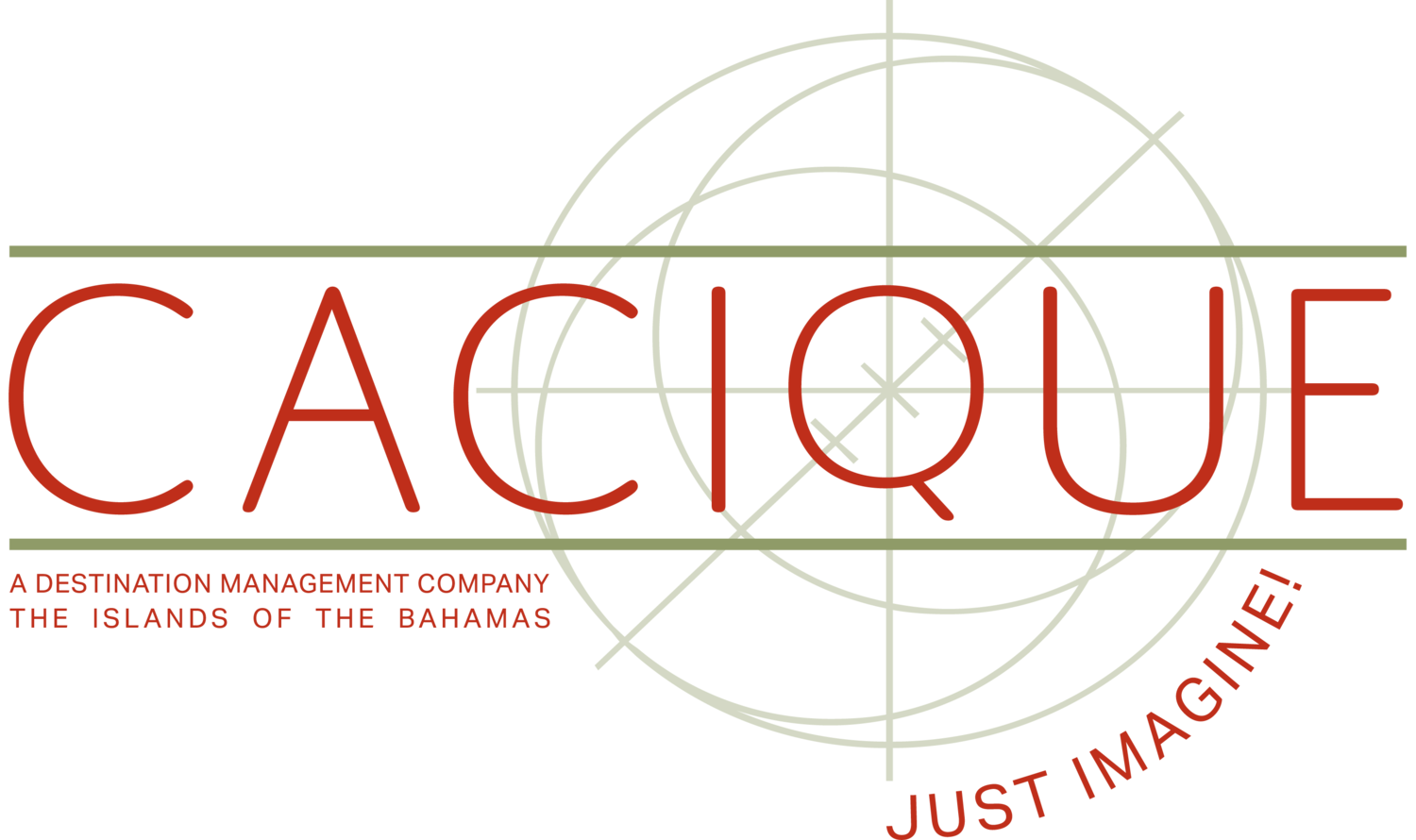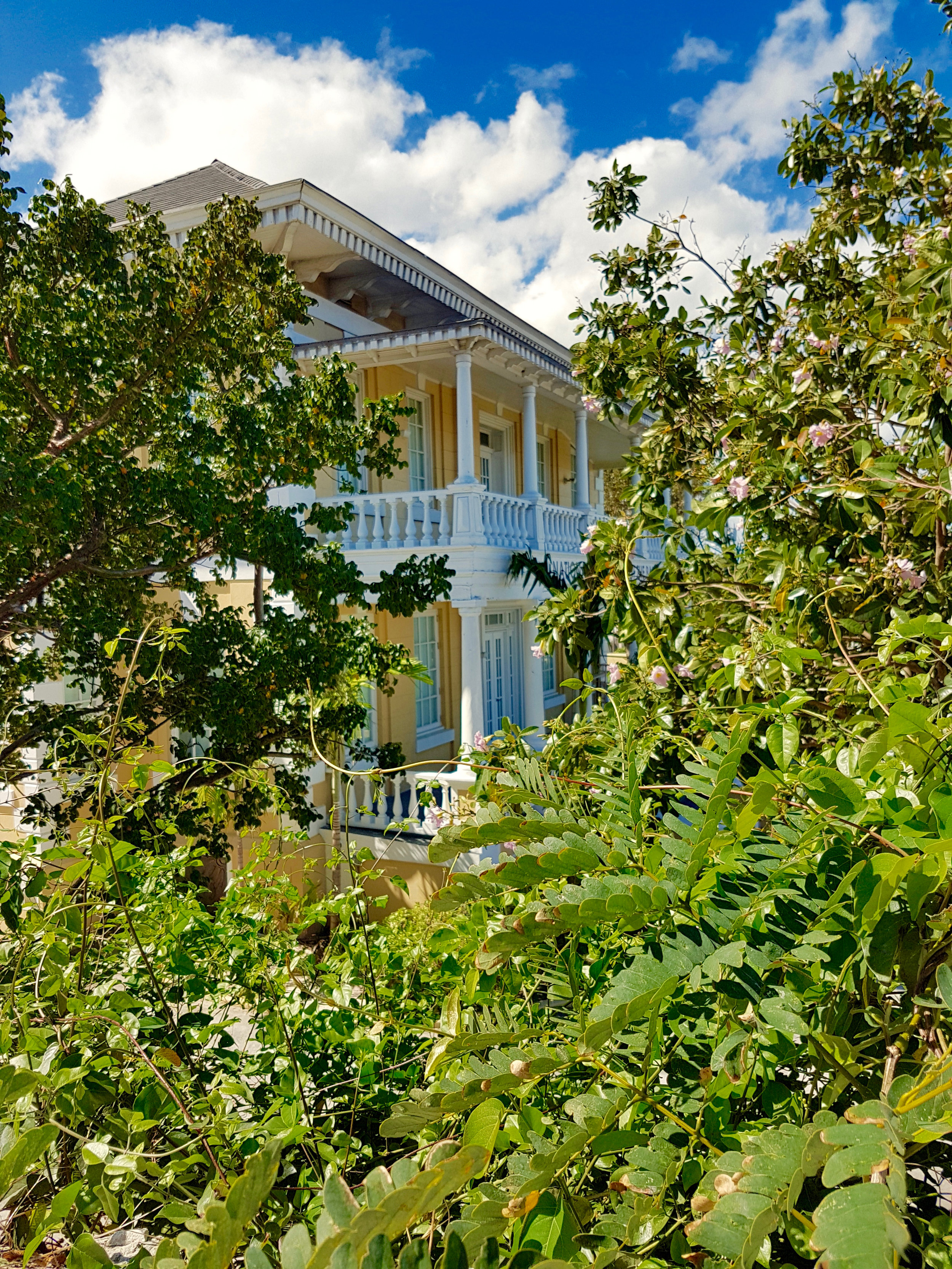Discover Cacique | The NAGB AMPHITheatre
“The universe is not made up of atoms. Its made of TINY STORIES. ”
At Cacique, we believe in the power of stories. As the leading DMC in The Bahamas, we are storytellers in everything we do, weaving breath-taking, multi-sensory narratives for our clients from the moment they step off the plane.
We also believe in the power of storytelling to shape culture and promote change. Storytelling, it is said, is the oldest form of education and "the most powerful way to put ideas into the world today" (Robert McKee). So...for today's story, Amanda Coulson, Director of the National Art Gallery of The Bahamas is helping us to “re-imagine” where and how we share stories, with the highly-anticipated opening of the first and only Bahamian amphitheatre in the beautiful grounds of historic Villa Doyle - a timeless, breathtaking space, ripe for storytelling in all its forms - art, music, performance, weddings, meetings, conventions and events of all sorts. As we like to tell our Cacique customers - there are no limits. JUST IMAGINE the possibilities...
Cacique. What exactly is an amphitheatre for those that may not know?
Amanda. Amphitheatres were common features of ancient Greek and Roman architecture and were circular or oval theatres with tiered seating arrangements that looked down on a central space for the presentation of performances, whether musical, theatrical or sporting. Essentially they were the ancient precursor to a stadium, though they could be small and intimate as well as large and grand. Given the excellent climate in the Mediterranean region, these were typically outdoors, but in modern architecture you find them indoors as well. The NAGB amphitheatre is in a beautiful open-air setting that allows the audience to enjoy the surrounding garden and views.
C. How and when was the idea first conceived?
A. The NAGB has owned the property next door for many years and it was earmarked for further future development for a contemporary wing, so that the Villa Doyle could focus on displaying historic artwork. The idea of a sculpture garden came to me after visiting the Leon Levy Native Plant preserve and the beautiful private garden of Dawn Davies, which is dotted with sculptures and is a very peaceful oasis. The land, however, was quite unstable—whether for the sculpture garden or for a future building—as it is situated on a very steep hill and ever rainy season the earth just gets washed away. When I arrived there was about 4-5 feet of earth pressing against the exterior enclosure wall, which was collapsing into the street. Terracing was therefore required—to hold the earth in place—and while we were looking at the site with a local landscape architect, Jessica Malms, who saw that the site itself was a natural bowl and if we terraced according to its structure, it would create a natural amphitheatre.
C. Tell us about the process of building the amphitheatre. Is there anything special about the location it is built upon?
A. The location is significant and also influenced the idea for the garden. The site is connected to the earliest African Hospital, which was first mentioned in documents as far back as 1788. The narrow, very picturesque street flanking the property to the east is, in fact, called Hospital Lane, as it was cut out of the limestone to give the African populations access to the hospital located nearby, very possibly on this property. So the idea of healing was important to me and connecting that idea to the power of not only the plants in the garden (Bush Medicine) but also art and culture and the power it has to change lives.
The idea of healing is also deeply connected to the construction of the amphitheatre, as it will be called “Fiona Theatre” in memory of a wonderful female musician, who died long before her time. We were keen throughout to use as many native materials as possible, especially as we wanted to have that feeling that it grew out of the land somehow. From start to finish-including engineering, permits, finalising designs, sourcing material and labour—the whole project took about a year and a half, but the whole thing was blissfully seamless and mostly very enjoyable.
Entering the Fiona Theatre at the NAGB.
Amanda Coulson shows the sculpture trail behind the amphitheatre.
C. Why is it significant to have an amphitheatre in The Bahamas, specifically in Nassau?
A. As the capital of our nation it felt imperative to have a fabulous space for music, performances, lectures and screenings, to be a resource to our creative community. It seems like a no-brainer, given our climate, to have an exterior space for performances and—being outside—it has less of an air of exclusivity: it is literally open to the road and feels like an embrace of the street. So, for me, it is a way to make the NAGB more open as music has a way of drawing people in.
C. Why was it important to introduce the idea to the Bahamian public during the time of the 'Medium: Routes and Practices of Mysticism and Spirituality' art exhibition?
A. We always get a great turnout at our openings, so we felt it was a great idea to use the amphitheatre for the first time to see how it would hold an audience, what the acoustics would be like and so on. Everyone had been watching its emergence from over the Hillside for the last few months, so it seemed a good opportunity to finally show the community first hand what we were up to!
C. When is the official opening for the amphitheatre and when will it be open to the general public?
A. The official opening and naming ceremony is scheduled for early April. It will be more of a grand and celebratory affair with a performance by Fiona’s sister, Ambra, and her classical musical group, The Ayriel Trio. There will also be more traditional Bahamian music to celebrate our diversity of musical forms—including Rhythm & Youth and the Junkanoo Commandoes—and we hope to see a very big crowd there. There will be music on the veranda as well, followed by food and cocktails and, of course, art! The site itself will be open during museum hours (Tuesday through Saturday, 10 am - 5 pm and Sunday, noon - 5 pm) and accessible from our main entrance or via the sculpture garden.
Peeping through the vines at historic Villa Doyle.
The original wall dating back to the 1700's made with ground conch shell cement.
C. Who and what is the amphitheatre looking to host in the near future?
A. We will be holding a public screening of “Lilies of the Field” in honour of Sir Sidney Poitier’s 91st birthday on February 20th and then nothing until the Grand Opening. After that we'll be hosting monthly evening events called "Friday Night Live", which will be music nights while the NAGB remains open for late night viewing, and we’ll be moving our regular monthly art house Film Programme also into that space as well. Since everybody complains that there is nothing to do in Downtown Nassau, we’re just going to have to prove them wrong!
The Fiona Theatre is set to open April 6, 2018.
C. Any more exciting NAGB projects in the pipeline?
A. So many! First of all we have the usual roster of ever-changing exhibitions—such as “We Suffer To Remain,” a video project by Graham Fagen, who represented Scotland at the last Venice Biennale, to which Bahamian artists John Beadle, Anina Major and Sonia Farmer have been asked to respond, and “Traversing the Picturesque,” which examines the legacy of the romantic landscape. We will also be embarking upon a massive capital campaign in short order set to redevelop the small back house on our property to create functional office space, a dedicated educational space for our kids’ programme and—most importantly—a state-of-the-art and hurricane proof storage facility not only for our collection but for other important collections on the island so that, in the case of a catastrophic incident, our patrimony is not lost.
C. What is the current direction of Bahamian Art? Anyone or thing we should be looking out for?
A. Bahamian art is so broad with a myriad of voices; it's really hard to single any one thing out. Certainly we have a growing notoriety overseas in the contemporary world and leading that charge currently is an artist called Lavar Munroe, who was in Venice 4 years ago and is currently in the largest and most important American triennial, Prospect New Orleans. Our own Antonius Roberts was also just awarded an OBE, so I think slowly but surely The Bahamas is becoming known for more than our ubiquitous beaches! John Cox, a name many are familiar with, and Natascha Vasquez, an emerging talent, will both be exhibiting at VOLTA NY, an international art fair held annually in New York City in March. Tessa Whitehead is another painter who is maturing and is also opening up her own studio in the Chippingham area, which I would encourage art enthusiasts to visit. There is always a lot to see, between the NAGB, the D’Aguilar Art Foundation, HiIlside House, and Doongalik, and I'd encourage your readers to get on out there and discover our wonderful local art scene.
DISCOVER CACIQUE
At Cacique, we believe in the power of storytelling to weave unique, spectacular narratives for our clients from the moment they step off the plane. To find out about the Fiona Amphitheatre as a location for your event, to arrange a visit of the National Art Gallery of The Bahamas and sculpture garden, or to discuss a bespoke art experience with ground-shifting Bahamian artists and musicians, feel free to contact us.
Looking forward to the next story! ;)SS









